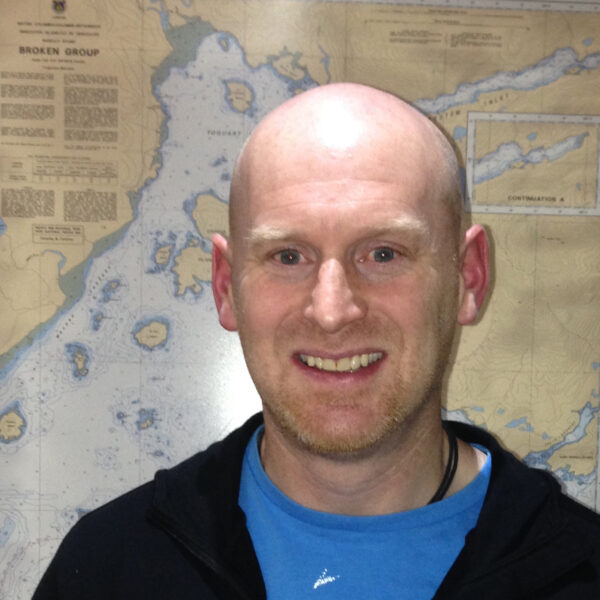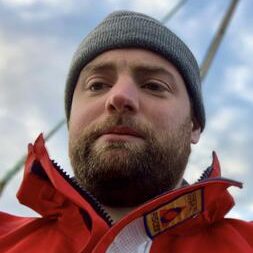Team
| Dr Carol Sparling | |
 | Dr Carol Sparling is the Director of the Sea Mammal Research Unit (SMRU) and has 20 years’ experience of monitoring, assessing and managing the potential interactions between marine mammals and marine renewable energy devices. Carol has been involved in consenting, developing and implementing adaptive management programmes for several tidal energy developments, including the world’s first commercial scale device (SeaGen) and the world’s first commercial array (MeyGen). |
| Dr Douglas Gillespie | |
 | Doug specialises in developing software tools for processing large acoustic datasets. The PAMGuard software for Passive Acoustic Monitoring (www.pamguard.org) is used around the world for the detection, classification and localisation of marine mammal vocalisations and one of the primary tools we use to process our data. Not all animals vocalise though, so we’re increasingly reliant on active multibeam sonars to monitor the movements of the quieter species. Doug is currently updating PAMGuard to also work with active sonar data. As with the PAM data, the system uses signal processing algorithms to do most of the work, but also provides a sophisticated user interface to allow other team members to make a manual check of the data. |
| Dr Gordon Hastie | |
 | Gordon is a Senior Research Fellow at the Sea Mammal Research Unit, University of St Andrews. He leads a wide range of studies of the impacts of novel anthropogenic activities on marine mammals. His work is funded by NERC, the Scottish Government, and the UK Governments Department of Business, Energy, and Industrial Strategy. This research includes the impact of human activities on marine predators, and behavioural responses by marine mammals to underwater sound. As a lead researcher in the impacts of marine renewables on marine mammals, he also provides high level advice to a range of regulatory and Governmental stakeholders. He has previously worked in environmental consultancy with a major focus on delivering marine mammal services to the tidal industry and, recently, he has led a range of research projects tracking marine mammals around tidal turbines. His experience delivering this work, together with his technical expertise on the use of seal tag data in tidal environments make him ideally placed to successfully deliver the proposed development project. |
| Dr Jonathan Gordon | |
 | Jonathan is a cetacean field biologist with some 40 years of experience studying cetaceans at sea, in particular sperm whales and harbour porpoise. Over this time, he developed a particular interest in developing and using practical passive acoustic tools for studying marine mammals including assessing populations and measuring behaviour and for mitigation. An interest in tidal stream habitats, how cetaceans (particularly porpoise) use these and how to measure metrics important for managing and minimising potential risks from marine renewables grew from a Welsh Government funded project off Anglesey in 2009. This continued through a series of projects funded by Marine Scotland and NERC. In addition, to pursuing academic research Jonathan has a small consultancy providing survey and mitigation services and developing, building and providing hydrophone systems to academics and industry. |
| Dr Jamie MacAulay | |
 | Jamie worked with the Sea Mammal Research Unit (SMRU) at the Scottish Oceans Institute (SOI) between 2010 and 2019 developing acoustic techniques to track the movements of cetaceans in challenging underwater environments, such as tidal races and on fishing gear and then moved to Aarhus, Denmark as a postdoc researching bats and toothed whales. Over his career, Jamie has been involved in several projects around the world, working with field teams in Tanzania, Sri Lanka, New Zealand, Denmark and the UK. Jamie is a significant contributor to the PAMGuard project as a developer and coder and has developed several new modules as well as contributing to general support and ongoing maintenance. An important aspect of his work has been making these new techniques available to both academic researchers and those working in industry (i.e. acoustic MMOs). Jamie regularly delivers specialist courses on using PAMGAURD for mitigation and survey for organisations such as PAMTECH in UK and NOAA in USA. |
| Dr Benjamin Blundell | |
 | Dr Benjamin Blundell recently earned his PhD in Biostatistics at King's College London, researching artificial intelligence and it's use in microscopy. Ben was a scientific programmer at Queen Mary University of London, working with scientists and researchers in creating and improving software, with a focus on high performance computing. Ben’s work revolves around science, arts and technology; he has worked with a number of artists, private companies and universities during his career in the computer graphics space. Familiar with all levels of the computing stack - from electronics to architecture design, Ben is currently focusing on Artificial Intelligence and Machine Learning. |
| Emma Longden | |
 | Emma studies the three-dimensional movements of marine animals at current and future tidal turbine sites. She will be analysing data collected from (SMRU Instrumentation) GPS tags to measure baseline distributions, movements, and dive behaviour of seals in relation to environmental conditions (e.g., current speed, tidal state, time of day) at a tidal turbine site. As well, Emma is using sonar data collected at an operational tidal turbine site in the Pentland Firth to understand fine-scale movements of marine animals around a turbine. |
| Katie Rapson | |
 | Katie is an acoustic data analyst, working on the various acoustic work packages. She has experience deploying scientific equipment at sea and analysing acoustic data to understand presence of cetaceans. She is currently working alongside Jonathan and Jamie, to develop, build and deploy cutting-edge acoustic instruments to understand 3D movements of harbour porpoise in high tidal flow environments. |
| Jessica Montabaranom | |
 | Jessica studies the fine scale movements of marine mammals in tidally energetic environments using a novel sonar tool. She processes and analyses data to measure 3D distribution and interactions with tidal turbines, specifically harbour porpoises and seals and monitor the effects of the tidal energy industry. She also assists in passive acoustic data collection and deployment/retrieval of acoustics recorders, to establish baseline abundance and distribution of marine mammals at future tidal turbine sites. |
| Ellie Gregory | |
 | Ellie is working alongside Doug and Gordon to assess the efficiency of a fully automated PAM-based mitigation system to reduce collision risk between marine mammals and tidal turbines. Currently, PAM systems require a human-in-the-loop to verify detections of marine mammals, but in a fast-flowing environment there are likely only a couple of seconds available between detection and triggering a mitigation action. Ellie is using porpoise click data from a tidal turbine site to determine the efficiency of a fully automated detection process in triggering a real-time mitigation action. |
| Anhelina Holoborodko | |
 | Anhelina is working on the sonar data collected at the MeyGen site, aiding in data processing and analysis in order to quantify seal presence around the turbine and inform collision risk models. |
Collaborators
Dr Matt Carter, Sea Mammal Research Unit, University of St Andrews
Dr Peter Robbins, University of Bangor
Dr Line Cordes, Norwegian Institute for Nature Research
Gemma Veneruso, University of Bangor
Fraser Johnson, MeyGen
Past team members
Dr Joe Onoufriou, PhD student, University of St Andrews. “Effects of tidal turbines on the movements of marine predators in tidally energetic areas”. Co-supervised with Dave Thompson (SMRU), Liz Masden (UHI), Jared Wilson (Marine Scotland), and John Baxter (SNH). Current position: Senior Marine Mammal Scientist at Marine Scotland Science
Laura Palmer, PGRA, Acoustic data analyst for marine mammal/tidal turbine interactions project. Current position: PhD student at University of Bristol.
Clair Evers, PGRA, Acoustic data analyst for marine mammal/tidal turbine interactions project. Current position: Marine Mammal Biologist at Fisheries and Oceans Canada.
Michael Oswald, Engineer, Equipment and sensor design for NERC Innovative Monitoring Techniques project. Current position: Lead Software Engineer at Marqeta, Inc.